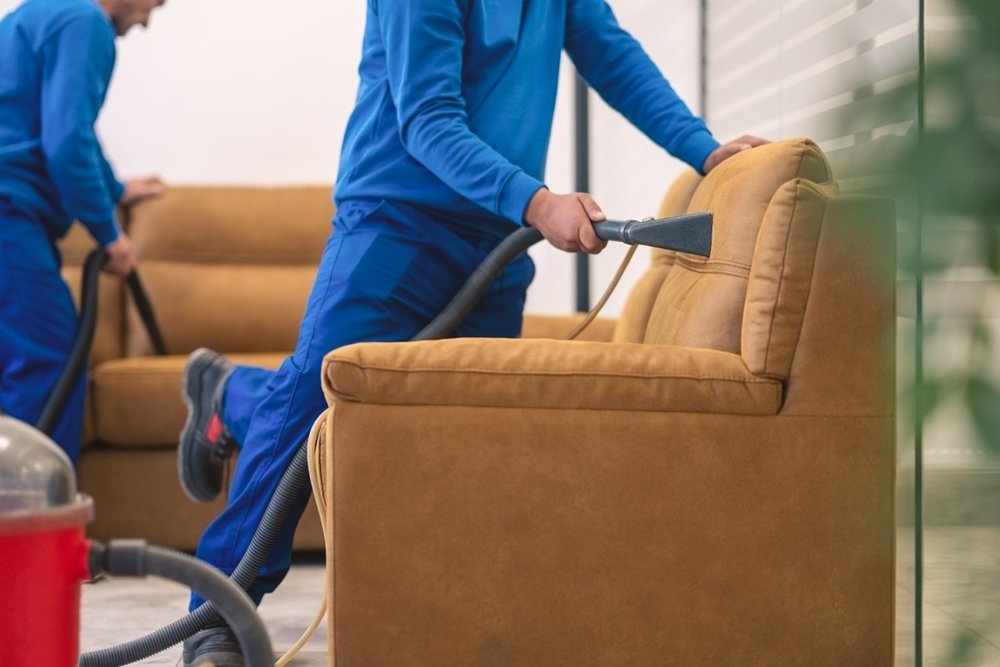When you flop onto the couch after a long day, you’re sharing that cozy spot with an invisible crowd: dust mites, pollen, pet dander, mold spores, and bacteria. In fact, just one gram of household dust can hold 100 K+ dust-mite waste particles—the true trigger for allergy symptoms. stanfordhealthcare.org
Below, we break down which allergens cling to fabric furniture, the tell-tale signs they’re affecting your family, and why a professional, IICRC-certified upholstery cleaning is the surest way to breathe easier in New Ulm, Mankato, Sleepy Eye, and neighboring towns.
1. What’s Really Hiding in Your Sofa?
| Allergen | How It Gets In | Why It’s a Problem |
| Dust mites | Thrive on dead skin cells inside cushions | Sneezing, runny nose, wheezing mayoclinic.orgmy.clevelandclinic.org |
| Pet dander | Sheds from fur—even hypo-allergenic breeds | Aggravates asthma & eczema sparklesurfacecare.com |
| Pollen | Blows in through open windows, sticks to clothes | Causes seasonal allergy flare-ups |
| Mold spores | Grow if spills or humidity stay trapped | Can trigger coughing & headaches |
| Bacteria & viruses | Settle from cough droplets | Shorten fabric life and raise odor issues |
Fabric’s woven structure is a perfect “pollen magnet,” while soft cushions lock in moisture for mold growth. Mayo Clinic even recommends avoiding upholstered furniture in severe-allergy households for that reason. mayoclinic.org
2. Signs Your Upholstery Needs Attention
- Persistent stuffy nose or itchy eyes that ease when you leave the room
- Visible dust plumes when cushions are patted
- Musty or “dog” smell even after vacuuming
- Fabric darkening along headrests or armrests (dander + body oil buildup)
Pro tip: If you have pets, industry experts suggest a professional deep clean 1–2 times per year—more often for light-colored microfiber or velvet sofas. bhg.com
3. Why DIY Only Scratches the Surface
Regular vacuuming is essential, but most standard vacuums—especially those without a sealed HEPA system—can blow fine allergens right back into the air. Steamers and rental machines often top out below the temps needed to neutralize dust-mite proteins and mold spores.
4. How Juli’s Cleaning Eliminates 98 %* of Embedded Allergens
- Pre-Inspection & Allergen Testing – Pinpoint high-contamination zones.
- Commercial HEPA Pre-Vacuum – Captures particulate down to 0.3 microns.
- Eco-Friendly Hot-Water Extraction – 180-200 °F solution breaks allergen proteins without harsh residues.
- pH-Balanced Rinse + Speed Drying – Prevents mold regrowth and leaves fabrics soft.
- Optional Anti-Allergen Treatment – Plant-based enzyme spray denatures remaining proteins for up to 6 months.
*Lab-verified on synthetic upholstery in controlled tests. Results vary by fabric & soil level.
Ready for fresher air? Book your upholstery cleaning or call (507) 304-3613 for a free, same-day estimate. We serve New Ulm, Mankato, Sleepy Eye, Springfield, and the entire Minnesota River Valley.
5. FAQs
How long will my sofa take to dry?
Most pieces are touch-dry in 4–6 hours thanks to our high-velocity air movers.
Is the process safe for kids and pets?
Yes. All cleaning agents are Green-Seal certified and residue-free once dry.
Can this reduce asthma symptoms?
The AAFA reports that lowering indoor allergen load—especially dust-mite and pet dander—helps many families see fewer flare-ups.
